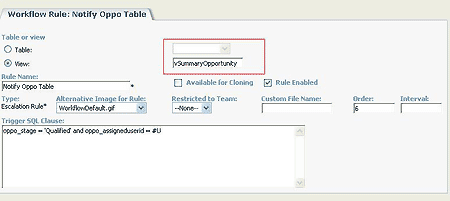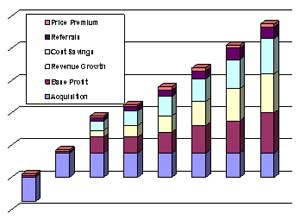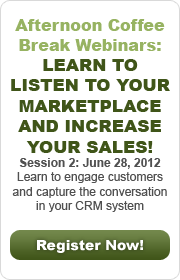There is overwhelming evidence in the value of an effective
eCommerce strategy across many industries. Thousands of business have
used the Internet to not only increase sales, but to also reduce costs
and to provide superior customer service, driving the value of Business
to Consumer (B2C) and Business to Business (B2B) online transactions to
hundreds of billions of dollars The size of the opportunity is too large
for any business to ignore.
Implementing an eCommerce strategy takes careful thought and planning,
and those that have been most successful have taken the time to fully
integrate their online presence with their traditional back office systems
and processes. In doing so these businesses have created effective multi
channel sales and support processes with which to provide service to their
customers.
Online Sales Growth Impressive in 2005
Retail internet sales rose 25% for the period of November 1 to December
25th to $18.11 Billion US according to comScore Networks Inc. compared
to the same period last year. Computer hardware was the top-ranking category
in sales volume with $4.1 billion spent online this holiday season, up
14% from last year. Apparel and accessories, representing $3 .0 billion
in online sales for November 1 to December 25, were up 37% from last year.
Online sales of consumer electronics rose 20% from last year to reach
$1.3 billion. The category seeing the biggest percentage of gain over
last year was sports and fitness products, where online sales during the
holiday period rose 49%.
According to Forrester Research overall online sales for 2005 will reach
$172 Billion, growing to $329 Billion by 2010, excluding online travel
which is expected to grow to a $120 Billion business in the same time
period. In addition, Forrester predicts that in 2010 the most significant
online categories will be tickets, books, consumer electronics, small
appliances, gifts, cosmetics and fragrances, linens, music and video products.
Many organizations are also successfully leveraging the internet for Business
to Business (B2B) transactions. And for good reason; according to Forbes.com
and GartnerG2 51% of businesses consider the Web as their single most
important source of business information regarding purchasing decisions.
In addition, Pembroke Consulting reports ‘that business customers are
taking a more active role in the pre-sale and transaction portions of
the buying process as comprehensive product information moves online’,
showing an increasing use of web based self service tools.
Keys to eCommerce Success
As with any sales environment attracting customers to your site is a
fundamental key to success. Without traffic you cannot generate sales.
In a Business to Consumer (B2C) environment implementing effective Search
Engine Marketing techniques is extremely important. Ensuring your site
is ranked highly by the search engines takes time and energy to do it
right and in some cases paying for positioning on key Search Engines like
Google is justified. Search engine marketing can also be a key tool in
a B2B environment as well, especially given the amount of purchasing related
research that business now do on the Web. However, once you have successfully
driven traffic to your site, the site needs to provide customers with
what they are looking for in a manner that they enjoy.
Many studies have shown that price is not necessarily the top driving
factor in online sales success, but rather the overall customer experience.
A website should accurately reflect a businesses brand and be compelling
enough such that a customer does not quickly move on to the next site.
Highlighting new products, or promotions and providing industry specific
information through whitepapers or useful links are also methods that
have been successfully used to build and maintain customer traffic on
a website.
Successful websites are not only visually appealing, but are intuitive
to use and generally require few clicks of a mouse for a customer to find,
and hopefully purchase, what they are looking for. This might require
search wizards to assist customers in navigating a large product catalog
of parts, or high resolution images of products so that customers can
accurately visualize what they will be buying from you. Ideally the product
information provided on a website reflects up to date pricing and availability
of products as well.
In a B2B environment, successful sites accurately reflect a business
customers pricing and shipping terms, and provide simple tools for business
customers to place repeat orders or to look up the status of orders and
outstanding invoices. A website can also be used to provide a wide variety
of customer self service tools, including the ability to look up the status
of orders, review account history, and perhaps to review and pay invoices
on line.
Common eCommerce Pitfalls
Perhaps the most common trap that organizations fall into when deploying
an eCommerce website is to not take the time to integrate it into existing
back office systems. Rather than taking full advantage of pre existing
product catalogs, pricing, terms, and order and payment processes businesses
deploy stand alone sites that may have some visual appeal, but require
duplication of processes and in most cases additional manual steps to
process orders and payments. The result is often a poor customer experience
and increased costs.
It is also not uncommon for a business to launch an eCommerce site with
great effort and fanfare, and to then not regularly up date the site either
visually to reflect the companies branding or more importantly product
mix. Customers may get frustrated with out of date content, or just bored
with the fact that there is nothing new to view.
Fortunately, as an organization that has chosen Sage Accpac ERP you can
cost effectively deploy a proven fully integrated eCommerce B2C and B2B
solution today that provides true two way integration of Sage Accpac Order
Entry, Accounts Receivable and Payment processing and an eCommerce enabled
website. These capabilities are made available to you by Iciniti Corporation,
which has been providing e-Commerce solutions for Sage Accpac customers
for more than eight years.
eCommSuite.net from Iciniti Corporation
eCommsuite.net is the leading eCommerce solution for Sage Accpac ERP
worldwide, supporting businesses in North America, the UK, South Africa
and Australia. Iciniti Store provides all of the tools necessary for an
organization to create a corporate website and webstore that takes full
advantage of existing inventory, pricing and customer account information
in Sage Accpac ERP. No longer does an organization have to manage web-based
data separately from data that already exists in Sage Accpac ERP. Organizations
can also provide customers with consolidated account and order information
regardless of where a transaction was initiated.
For organizations with a busy order desk environment, Iciniti provides
Iciniti Credit Card a fully integrated payment processing solution that
eliminates most of the manual steps associated with accepting payments
from invoiced items. Credit card and debit card processing have been seamlessly
integrated into both Order Entry and Accounts Receivable. In addition,
the system can be configured to match credit card batch cut-off times
simplifying bank reconciliation processes.
For organizations with complex order processing and payment requirements
Iciniti has provided Custom Solutions that use the basic building blocks
of Iciniti Store and Iciniti Credit Card to create solutions that integrate
order processing and payment processing across separate organizations
to reduce re-keying of order and payment information, as well as, brick
and mortar Point of Sale solutions for Franchises that use Sage Accpac
ERP.
Book your eCommSuite.net demo today
Axis Global Partners and Iciniti are jointly sponsoring online eCommSuite.net
demos during January and February. Please contact us at info@axisglobalpartners.com or Jim McLean jmclean@icintiti.com to arrange your demo today.









 Download our corporate brochure for more facts about us, our
clients and our solutions.
Download our corporate brochure for more facts about us, our
clients and our solutions.
 Driving Revenue Growth 1
Driving Revenue Growth 1 Satisfying Customers 1
Satisfying Customers 1